The Humour of Preston Sturges
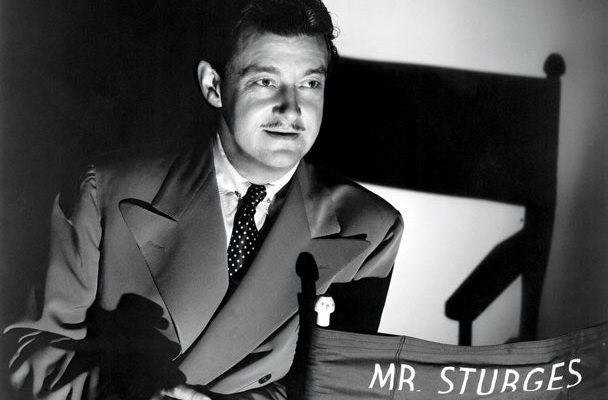
THE HUMOUR OF
P R E S T O N S T U R G E S
PROGRAMME 1 JULY 14, 1970 CENTRAL LIBRARY THEATRE
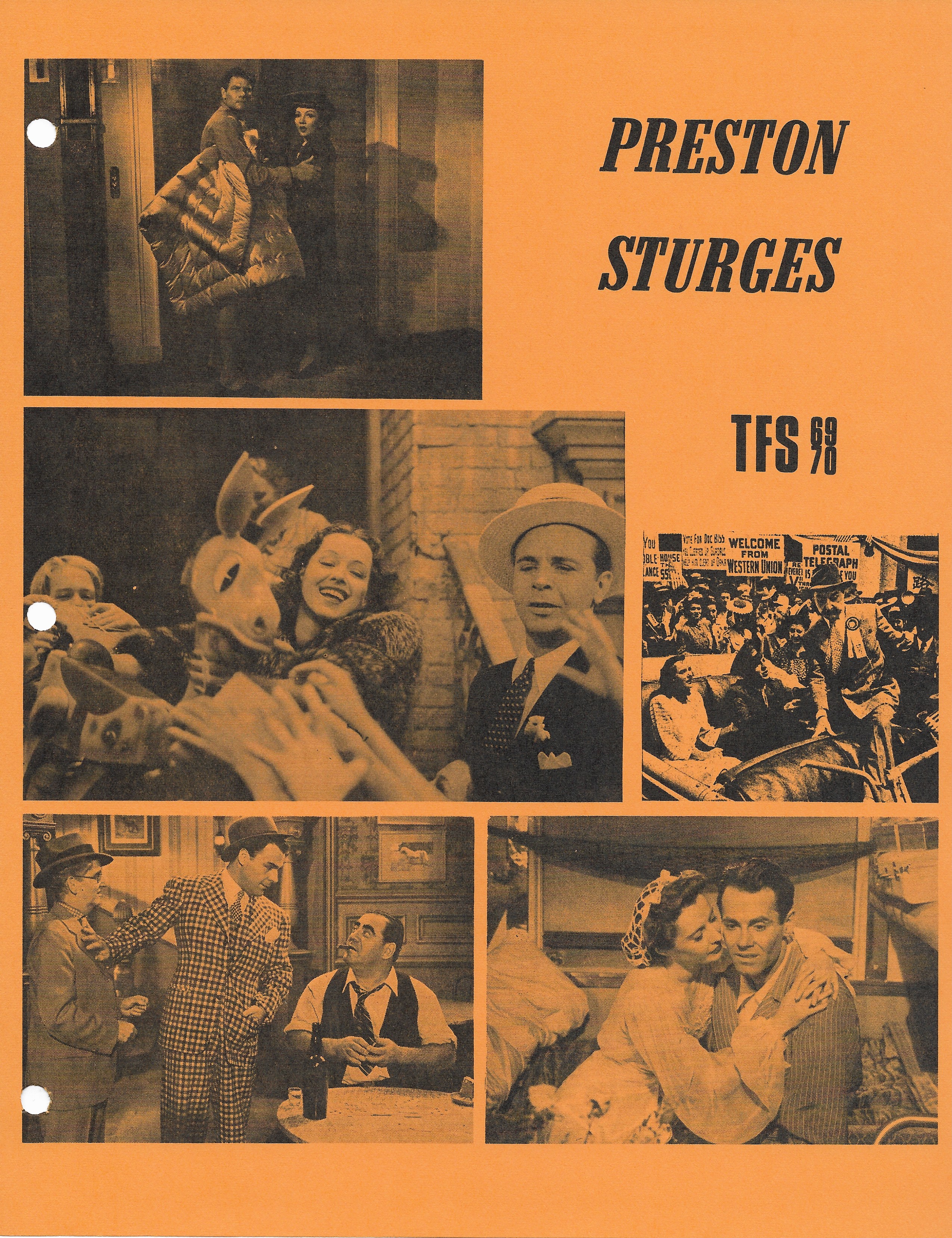
CHARLES CHASE: A BIOGRAPHICAL NOTE*
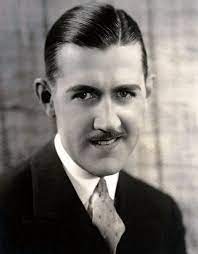
Born in Baltimore on October 20, 1893, the son of Charles and Blanche Thompson Parrott, both non-professionals, Charley Chase had a liberal education in performing in vaudeville and burlesque, later graduating to Broadway where he appeared in at least one show in 1912. In burlesque he gave an Irish monologue, sang, danced and played several musical instruments. All of this was helpful when he later went into movies; the musical background was not used until sound came in some years later, but the invaluable training Chase received in dancing and handling his body was essential throughout his career.
In 1913, Chase made his way to Hollywood. His first work in the film capital was at Universal, with the Al Christie unit. His stay at Universal was short, for in the middle of 1914 he was working for Mack Sennett. It was around this time that he decided to use the name of Charley Chase for his screen appearances. At this point of his career Chase was one of many Sennett comics who had no real personality, but merely acted as a caricature in standard comedy plots which could have featured any number of other comedians instead.
The most important aspect of his career at Sennett’s studio is that he was given a chance to direct. Learning by doing was the method at Sennett’s, and Chase learned quickly (for reasons unknown Chase decided to use the name Charles Parrott for his directorial credits). By 1916 his appearances in films were rare, while his directorial output was quite substantial. After reaching the status of director with Mack Sennett, Chase left his employ to work for Fox Pictures’ comedy unit as writer and director. His comedies for Fox, now apparently lost, were not well received at the time. There followed a succession of short associations with smaller companies (a series of Billy West comedies for King-Bee in 1918; some L-KO comedies with Billy Armstrong; another series of Billy West comedies for the new Bulls Eye Film Corporation in 1918; and finally a brief stay with Paramount in 1919, where he directed Mr. and Mrs. Carter De Haven in a series of two-reel comedies). In 1921, with six years of experience behind him as an actor, writer and director of comedy shorts, Chase was hired by Hal Roach. It was during his long stay at the Roach studio (from 1921 to 1937) that he produced his best work. During the last three years of his life he worked for Columbia Pictures, but his films there were a pale imitation of the quality achieved during the late 20’s and early 30’s.
On June 20, 1940, Charley Chase suffered a heart attack and died in Hollywood. For 26 years he had worked and devoted his life to the art of comedy (he appeared in over 200 shorts, and directed at least 100, from 1914 to 1940), a record which makes the neglect shown to his work seem strange indeed. Now, some 30 years after his death, here is a chance to view some of his films and appreciate what a really fine talent he was.
__________________________
* Except for passing mentions, virtually nothing has ever been written about Charley Chase. Most of the information, factual or otherwise, appearing in these notes is based on a recent, pioneer study on Chase by Leonard Maltin in Film Fan Monthly, July-August 1969.
Bad Boy USA 1925 2 reels b&w 16mm
Production Company: Hal Roach-Pathe. Direction: Leo McCarey. Supervision: F. Richard Jones.
Cast: Charley Chase, Martha Sleeper, Evelyn Burns, Hardee Kirkland, Noah Young, Olive Borden, Leo Willis.
The very first 2-reelers Chase made in 1925 cemented his screen personality for the next fifteen years, and managed to set him apart from the production-line comics of the ay. The first, and perhaps most important decision was to let Chase be himself on the screen. He wore no special disguise or costume, and in fact was a rather handsome young man. Another vital decision was to eschew slapstick-for-slapstick’s-sake. While sight gags were an integral part of the Chase films, they always seemed to tie into the plot, and have their basis in genuine comic invention, rather than time-worn slapstick elements. Right from the start, the Chase character came into focus: a dapper, reasonably intelligent but incredibly naïve young man who inevitably found himself in some outlandish circumstances, through no fault of his own. One of Chase’s 2-reel gems from this period is Bad Boy. Here Charley, a spoiled mama’s boy, goes to work at his father’s iron mill to prove his worth and win his girl (Martha Sleeper). The results, of course, are disastrous, and one particularly funny scene has Mother bringing Charley a ‘lunch’ at the iron works…
On the Wrong Trek USA 1936 2 reels b&w 16mm
Production Company: Hal Roach-MGM. Direction: Charles Parrott & Harold Law.
Cast: Charley Chase, Rosina Lawrence, Clarence H. Wilson, Bud Jamison, Leo Willis, Bob Kartman, Harry Wilson, Harry Bernard, Frances Morris, Pat West, Charlie Sullivan, Lester Dorr, Harry Bowen, Eddie Parker, and Stan Laurel & Oliver Hardy.
Chase’s characters did not change with the addition of sound. Just one important factor was added: Charley decided to sing. And sing he did. Some of his sound shorts had more music than comedy in them, and most contained unusual and often charming songs, some supposedly composed by Chase himself. However funny he was during the course of the short, Chase always took his singing seriously. He was quite good and particularly did well with a barbershop quartet known as The Ranch Boys, who appeared with him in a number of his talkies. Chase also played several instruments, and often accompanied himself on the banjo or guitar. In tonight’s short, he and Rosina Lawrence sing “Let’s Make It a Big Day”.
The surprise appearance of Laurel and Hardy, though not characteristic for them, illustrated another ingredient that made the Chase talkies successful. A very important factor was the Hal Roach stock company of players, who showed up in everything from OUR GANG comedies to Laurel and Hardy films. Among the members: lovely Thelma Todd who was Charley’s leading lady in a number of his films; Billy Gilbert, who turned up in both large and small roles; James Finlayson, when he wasn’t at odds with Laurel and Hardy; Edgar Kennedy; and in tonight’s film the Boys themselves. These people worked as a stock company and could always be counted on for first-rate work in minor roles, often stealing the spotlight from the star for several minutes. In closing, I should mention that On the Wrong Trek holds one additional attraction for us today–the various cars of almost half a century ago which it shows.
Notes by Peter Poles
STURGES’ LIFE AND CAREER
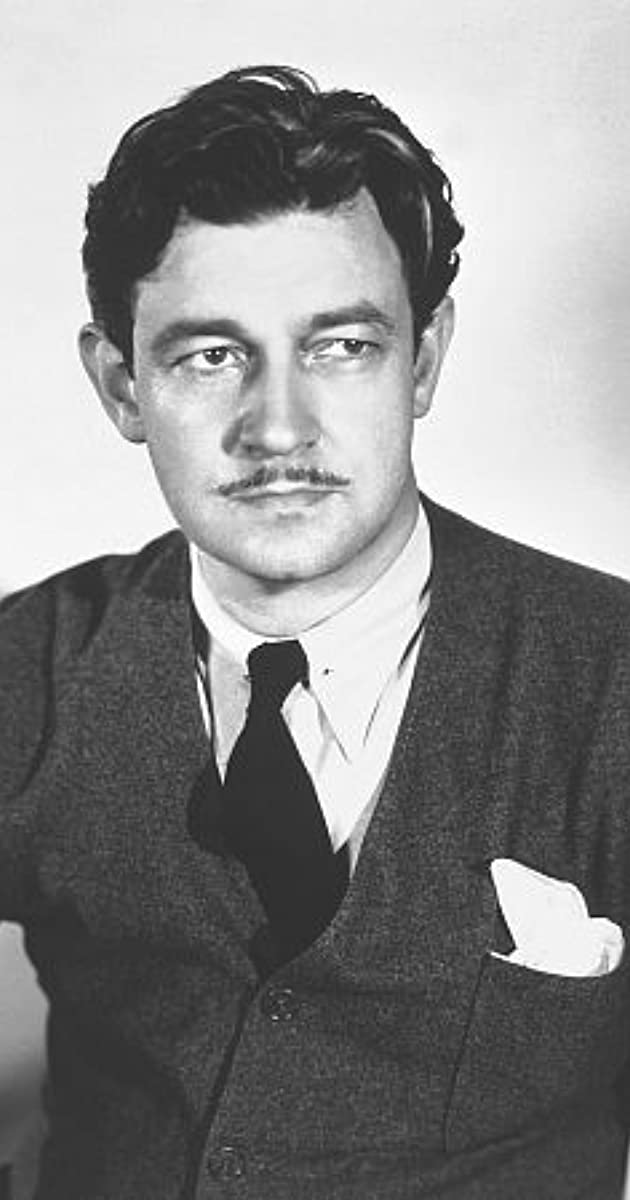
Every attempt to synopsize even an uneventful life must be misleading in some respect. But with Sturges, none of the critics have been able to resist the temptation and nearly all have loaded the dice to some extent, according to their own bias. The best version I have read is James Agee’s, when he was writing for Time Magazine in 1944:
“The life of Preston Sturges might read as dizzily as one of his own comedies if it were not, in essence, so intensely bitter. On his first day at school in Chicago, Preston rode a bicycle and wore a Greek chiton. The bicycle was his stepfather’s influence–Solomon Sturges, stockbroker and socialite, was a champion cyclist and a good amateur baseball player. The Attic haberdashery was his mother’s idea. Mary Dempsey, who changed her name to Beatricci D’Este and finally settled for Mary Desti, was the bosom friend of Isadora Duncan.
“Preston’s mother was determined that he should be a genius. ‘I was never allowed’, Sturges said, ‘to play with other kids. They wedged art into me from every side. I was dragged into every goddamn museum in the world.’ There were gay moments, but they usually stank of cuture.
“The effect of such training was predictable. ‘They did everything they could’, he says, ‘to make me an artist, but I didn’t want to be an artist. I wanted to be a good businessman like my father.’ He was accordingly delighted when, at 16, he became the business manager of the Deauville branch of Mary’s Paris cosmetics firm. When the U.S. entered World War I he joined the Air Corps, served in Tennessee and Florida till the Armistice.
“After the war, Sturges returned to the Maison Desti. He knew a good deal about cosmetics, invented a kissproof lipstick. His mother, in England with a fourth husband, was on the rocks again. She claimed the business; he handed it over and went to work as a free-lance inventor. By the time he was 30 he was about as flat a failure as a man of his age and background could be. Then his appendix ruptured, and saved his life.
“For six weeks, in a Chicago hospital, Sturges lay flat on his back. He emerged with an absolute determination to become a playwright, a no less absolute confidence in his ability. Sturges’ second play, “Strictly Dishonorable”, which he wrote in six days, was a great Broadway comedy hit, running 69 weeks.
“After three flops, Sturges went to Hollywood. For eight years he pestered producers to let him direct his own pictures; finally, after he had written 13 screen plays, Paramount’s William Le Baron gave him his chance with The Great McGinty. This was the surprise hit of 1940. Some Hollywoodians even accepted Sturges’ startling theory–that one man with a good head is better than any hundred men bumping heads.”
From 1940 to 1944, in an almost incredible burst of creativity, Sturges wrote and directed a string of memorable screen comedies for Paramount that included McGinty, Christmas in July, The Lady Eve, Sullivan’s Travels, The Palm Beach Story, The Miracle of Morgan’s Creek and Hail the Conquering Hero. His last picture for Paramount, The Great Moment (1944), told the story of anaesthesia, and was apparently quite serious–at least for Sturges. Paramount, however, wasn’t happy and demanded changes. As released, the picture was a flop, and Sturges and Paramount parted company.
Penelope Houston, in her recent article on Sturges (Sight and Sound, Summer 1965), picks it up from there:
“After 1944, certainly, nothing was quite the same. A partnership with Howard Hughes produced Mad Wednesday, with Harold Lloyd. He directed Unfaithfully Yours, a comedy which was nearly brilliant, but not quite Sturges; then the less exhilarating The Beautiful Blonde from Bashful Bend. There was a long silence, and then in 1955 came The Diaries of Major Thompson, with Jack Buchanan as an Englishman in Paris. It was Sturges’ last film, and it was sadly, defiantly, unfunny, as though somewhere along the line the mainspring of that perfect comedy timing had snapped.”
Sturges died in New York City, August 6, 1959, three weeks before his 62nd birthday.
STURGES’ STYLE
“…just as there is no fun in it when everything is serious, so there is no fun in it when everything is funny.
…the comedy of ice melts very easily into mere colourless water; and the mockers of everything are really mockers of nothing.
For in a world where everything is ridiculous, nothing can be ridiculed.”
(G.K. Chesterton, “On the Comic Spirit”)
Thousands of adjectives have been thrown around by critics and reviewers in a vain attempt to describe, in print, the qualities and impact of Sturges’ comedy style. “Exuberant”, “cheerfully outrageous”, “adventurous”, “incorrigible”, “mercurial”, “vigorous”, “resourceful”, “tongue-in-cheek”, “complex”, “abundant”, “frenetic”, “little sense of discretion”, “gamut of emotions, paced so fast and handled so surely”, “pie-throwing burlesque of suburban manners”, all hit on aspects of his technique and personality.
The three best places to read about Sturges’ films are Miss Houston’s article in Sight and Sound, James Agee’s reviews for Time and The Nation (in “Agee on Film”) and in Manny Farber and W.S. Poster’s well-known article in Film Culture.
So start with the last-named:
“As a movie-maker the business-man side of Sturges was superficially dominant. He seems to have begun…with the intention of giving Hollywood a lesson in turning out quick, cheap, popular pictures. He whipped his scripts together in record-breaking time, cast his pictures with unknowns, and shot them faster than anyone dreamed possible…Sturges tore Hollywood comedy loose from…slick gentility…by shattering the realistic mold and the logical buildup and taking the quickest, least plausible route to the nerves of the audience.”
“Masterful with noisy crowds, he is liable to let a quiet spot in the script provoke him to burden the screen with ‘slapstick the size of a whalebone’.”*
* [E.g. – from Sturges’ script for The Miracle of Morgan’s Creek (in “Best Film Plays of 1943-4”):
“(Norval is proposing to Trudy. He stutters, hits his hand on the verandah rail, finally gets it out.)
TRUDY: Oh, Norval, this is so sudden!
NORVAL: Oh, Trudy.(He topples off the porch rail, grabs a vine and falls out of sight.)]
Next up, Miss Houston:
“His defences were built up in depth; his favourite approach was the oblique and glancing one, with all the retreats into burlesque left open. His films give the impression of running on sheer, undiluted nervous energy rather than on thought.”
“Sturges wasn’t a particularly inventive film-maker; he liked to keep a scene in medium two-shot, moving into close-up on key dialogue; his settings did their job, but they seldom strike the eye. But he knew everything about comic timing, and how to play a scene so that the impression is of unfaltering action, a steady flow of bustling, breathless movement which seems to be held just on the point where it threatens to break out of the frame.”
“Even Sturges’ language, with its mixture of slang, repetitions, gibbering hesitations, and entirely formal turns of speech, is quite timeless.”
“…It is this timelessness which seems to me to give his films their free-wheeling assurance and their conjuror’s freedom of action. The links with reality are deliberately kept tenuous. Take, for instance, The Miracle of Morgan’s Creek> The film’s heroine, Gertrude Kockenlocker (Betty Hutton) is the volatile daughter of the local policeman, who contrives during one night to meet, marry, become pregnant by, and irrevocably mislay a soldier about whom she remembers only that his name may be something like Ratsky-Watsky. (Only in a Sturges film could one find a family named Kockenlocker gravely debating whether someone else could possibly be called Ratsky-Watsky.)”
“The ‘miracle’ makes everyone happy; it is frantic, absurd and rather touching, and it allows Sturges to play his favourite trick of flinging a film into such total chaos, as though all the characters were being swept off their feet by a tidal wave, that he can get away with practically anything. In Miracle of Morgan’s Creek he employs most, if not quite all, his range of moods; and each of them remains valid for precisely as long as it lasts on the screen.”
“Part of Sturges’ wayward brilliance lay in an eel-like ability to wriggle out of any tight corner ever set him by a picture. He appears to have allowed a plot to handcuff him and tie him down; he appears to have reached the moment when he must reward Agee by turning serious. And then there’s a great convulsion, and Houdini/Sturges is free again. Like Hitchcock, the other great showman, he seems to have felt total confidence in his ability to manipulate an audience, together with a small, genial contempt for the people who allowed him to run such rings round them.”
And finally, here’s Agee:
“Sturges is by far the smartest man for casting in Hollywood.”
(Strangely, no one has ever written a full comparison of Sturges and Frank Capra, although the two, though different in outlook, had so many talents and approaches in common.)
He also doubles the characters on their own trails, into sharp pathos, into slapstick (some of which falls flat), into farce as daftly unsettling as being licked to death by a lioness, to the edge of tragi-comedy, and into moments of comedy which could emerge only from their full quality as human beings.”
In discussing Morgan’s Creek, Agee comes up with perhaps the closest thing to the epitome of Sturges yet committed to print:
“Above all Sturges carries farther than he ever has before his bold blends and clashes of comic and realistic angles of attack. In a typically fine scene on Christmas Eve, when Trudy’s (Betty Hutton) pregnancy has developed the comic-emotional portentousness of a delayed-action bomb, he manages to sustain an atmosphere of really tender pathos and, at the same time, (1) to cue in “Silent Night”, (2) to show irate Constable Kockenlocker (William Demarest) hammering the hell out of a recalcitrant Christmas star, (3) to let him comfort his restive daughter with the noble reminder (deleted the second time I saw the film) ‘You may be waiting for the President of the United States’, and (4) to cap that, for Bethlemayhem, by having young Emily (Diana Lynn) inquire, gently, what the cow is doing in the kitchen.”
Notes by Doug Davidson
These notes are reprinted from the Toronto Film Society’s notes for the showing of December 13, 1965, when the feature was Sullivan’s Travels.

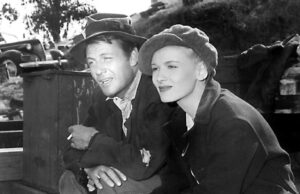
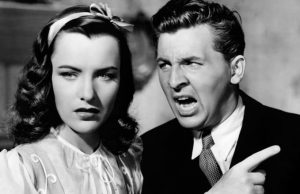
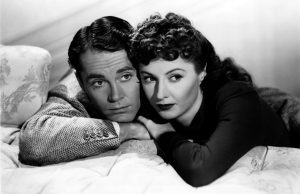






Leave a Reply